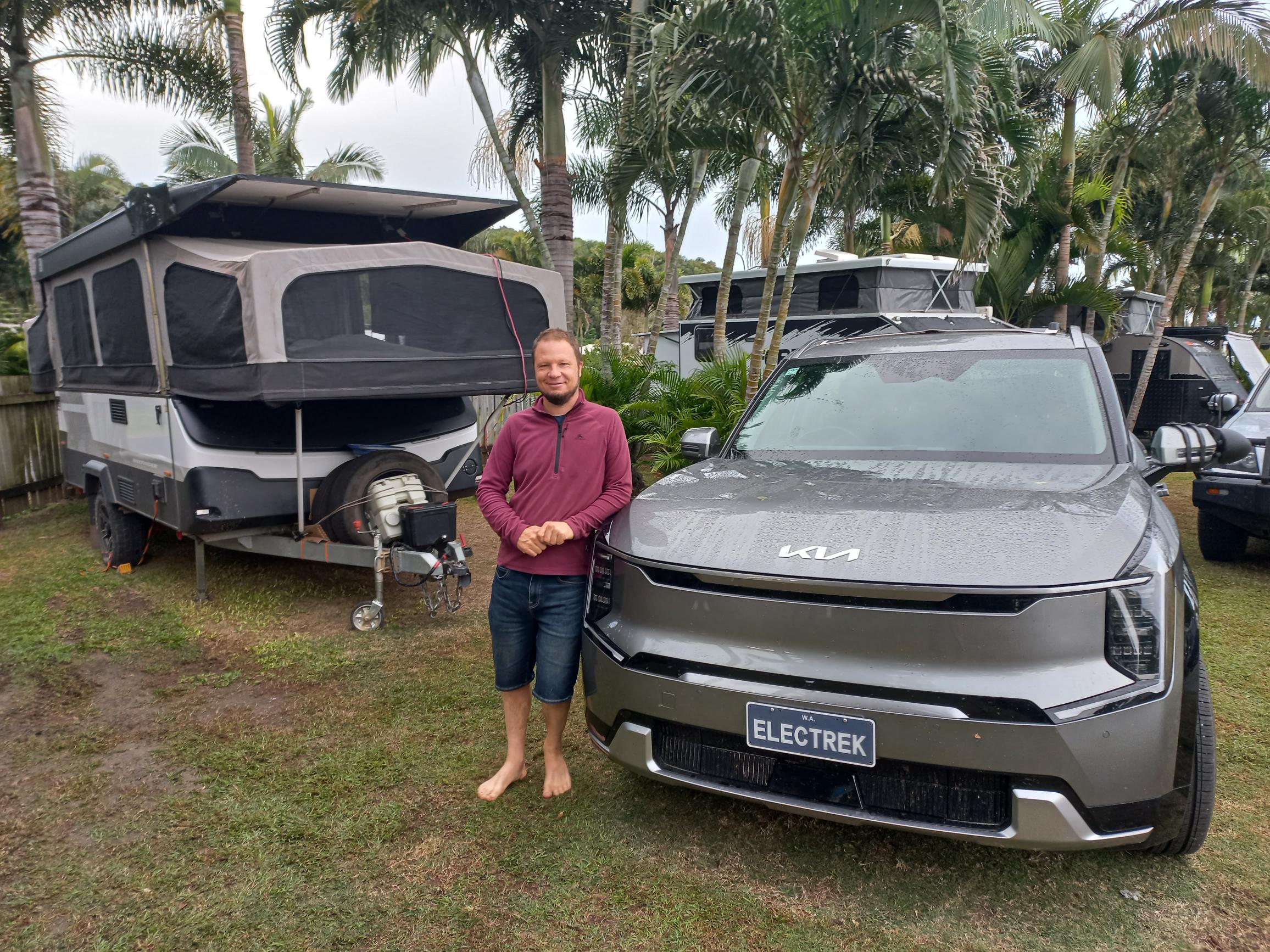Sign up for daily news updates from CleanTechnica on email. Or follow us on Google News!
There they go again. The US state of Texas is known for its deep roots in the fossil energy industry, but its business friendly environment is attracting a torrent of cleantech startups aiming to decarbonize the global economy. That includes the Estonian firm Clevon, which tapped the Texas city of Northlake to showcase a multi-vehicle fleet of autonomous cargo delivery EVs, leading to full scale-up into people-ferrying robotaxis.
Robotaxis: The Bad (And The Good)
I’m using the word “autonomous” a bit loosely here. As noted by The New York Times earlier today, human oversight of autonomous systems from remote locations is a practice among some firms. Unless the company in question falsely portrays their system as 100% free of human hands, that’s not a particularly bad thing. With some of the US public developing a skittishness over autonomous technology, the reassuring gaze of a human eye could help alleviate concerns.
Robotaxis have gotten a bad rap in the US in recent months following a series of accidents involving GM’s Cruise robotaxis. Public opinion polls also show that distrust of fully autonomous vehicles is trending upwards in the US. The robotaxi firm Waymo has established a good track record despite some hitches, but rising doubts over Tesla’s ability to deliver on its robotaxi promise are also contributing to the apprehension.
Aside from safety concerns, questions have been raised over whether or not robotaxis would necessarily improve urban quality of life. Based on some studies of ride-hailing services, the answer is not necessarily.
The research is still in the early stages, but a study of ride-hailing services from the University of California–Davis suggests that robotaxis will not help unclog city streets unless they focus on shared rides.
In a rider survey of cities in California, the UC–Davis researchers found that ride-hailing services added to urban congestion by replacing trips that would have been covered by mass transportation, carpooling, walking, or cycling alternatives.
“At their best, ride-hailing services can connect people to mobility opportunities they may otherwise not have had, ideally while saving emissions and reducing traffic when the vehicle is electric and the ride is shared,” they concluded (emphasis added).
Baby Steps To The Ride Sharing Robotaxi Of The Future
Into this market steps Clevon, which has adopted a step-by-step business model. Instead of launching a full sized autonomous robotaxi onto the streets, the company has spent several years deploying its neighborhood-scale Clevon 1 cargo delivery robot in the EU and here in the US.
The idea is to introduce people to the benefits of autonomous mobility at their doorsteps, building up familiarity with the technology before inviting them to hop in for a ride.
I saw a Clevon 1 delivery robot up close last week, at its home turf of Talinn in Estonia.* The modestly-scaled EVs provide some interesting insights into the future of robotaxis, in terms of overall sustainability and quality of life issues in cities.
Ride- and delivery-hailing services, including e-bikes, have already raised concerns over the sustainability of focusing on single point-to-point services, whether they are autonomous robotaxis or not. Clevon has addressed the issue by showcasing an app-based, autonomous “locker on wheels” transportation system designed to accommodate multiple deliveries and pickups in one trip, with an emphasis on short distances and last-mile services.
Instead of a single large compartment, Clevon’s Autonomous Robot Carriers (ARCs) are outfitted with stacks of individual lockers, each opened with an individual security code.
Clevon CEO Sander Sebastian Agur was on site in Talinn to put the ARC through its paces for me. This particular vehicle was used by the Estonian app-based delivery service FUDY to ferry buckets of fried chicken around town, which explains the KFC logo.
Advantages Of A Multi-Locker, Autonomous Delivery Vehicle
I bike regularly around New York City, so the first thing I noticed was the size of the vehicle. Though narrow enough to navigate some of the larger bike lanes, the ARC is meant for in-traffic use. It can keep the deliveries flowing without impinging on the vanishingly small amount of space reserved exclusively for cycling. That’s a particular benefit in crowded cities like New York where bike lanes are already clogged with e-bike delivery services, mostly carrying a single package.
Agur also discussed how Clevon’s in-traffic vehicles contrast with delivery robots that scurry along sidewalks carrying one small load at a time, adding yet another obstacle in the path of pedestrians.
The Human Factor
Agur also made it clear that Clevon’s vehicles are not 100% free of human operation. He pointed out that Clevon’s AI-assisted autonomous driving technology deploys cameras and radar along with a fleet-based model, in which a remote human operator monitors the vehicles and lends a hand as needed. “AI can’t do everything…. There is always a human factor,” Agur told me.
Aside from safety assurance, the combination of human oversight with autonomous technology is a good fit for nations aiming to create a new cleantech workforce while dealing with shortages in traditional occupations. Agur noted that Japan, for example, is grappling with a driver shortage. The US transportation industry is also casting about for solutions to a looming driver shortage.
Everyone Is Coming To Texas
The Texas showcase, launched in 2023, followed trials of the autonomous vehicle in Europe. For the Texas venture, Clevon paired up with the Northlake branch of the national package and mail services firm PostNet, with a focus on enhancing services for home-based business owners.
That brought up another advantage in our conversation. Agur described the vehicle-to-doorstep delivery as “slipper distance,” meaning that a resident or home business manager does not have to make themselves presentable simply to receive a package. After all, one time-saving benefit of working from home is not having to go through a full round of toiletries every morning.
In a press release announcing the ARC project, Clevon also indicated why so many startups are heading to Texas. The company notes that its Texas office is located at the AllianceTexas Mobility Innovation Zone in Fort Worth.
“AllianceTexas is a 27,000-acre, master-planned industrial, mixed-use and residential development with a unique set of air and ground logistics assets, including a premier intermodal hub, multiclass and complex airspace around Alliance Airport, and interoperability across supply chain nodes, giving rise to a full spectrum of use cases from first to last mile,” the organization says of itself. AllianceTexas also served as a pilot test for the ARC, back in 2022. Under the name Clevon 1, the robot delivered meals from a restaurant to an airport team more than three miles away.
The Northlake community is also described as supportive, including a space for local ARC parking and recharging provided by Lamar National Bank.
Robotaxis: The Better
The little cargo carrier has been spotted in California and Georgia as well as in various locations in Europe. The next step is scale-up into larger vans and passenger vehicles. Agur drew my attention to New York City, which has established a new permitting process for EV makers to test autonomous vehicles.
Agur told me that it’s too early to discuss specifics, but he did say that New York City is focusing the permit program on ride sharing, which is what Clevon is planning for its next generation of vehicles. Instead of wedging a new fleet of single-occupancy robotaxis into city streets, the plan is to develop an autonomous vehicle optimized for ride sharing, in collaboration with the firm Indigo Technologies.
A shared-ride scenario in which autonomous technology takes more vehicles off city streets instead of adding them is a good thing. Looking ahead to a best-case scenario, the shared model would ripple to outer-ring neighborhoods and suburbs, to provide a convenient, emission-free connection to mass transit stations. If you have any thoughts about that, drop a note in the comment thread.
*The technology tour was kindly supported by the organization Trade Estonia, through the Estonian Business and Innovation Agency.
Follow me via LinkTree, or @tinamcasey on Threads, LinkedIn, and Instagram.
Photo: The Estonian firm Clevon is planning a full-sized, ride sharing robotaxi to follow up on its autonomous cargo delivery EV, now undergoing trials in Texas and elsewhere. Exclusive photo by Tina Casey in Talinn, Estonia.
Have a tip for CleanTechnica? Want to advertise? Want to suggest a guest for our CleanTech Talk podcast? Contact us here.
Latest CleanTechnica.TV Videos
CleanTechnica uses affiliate links. See our policy here.
CleanTechnica’s Comment Policy




